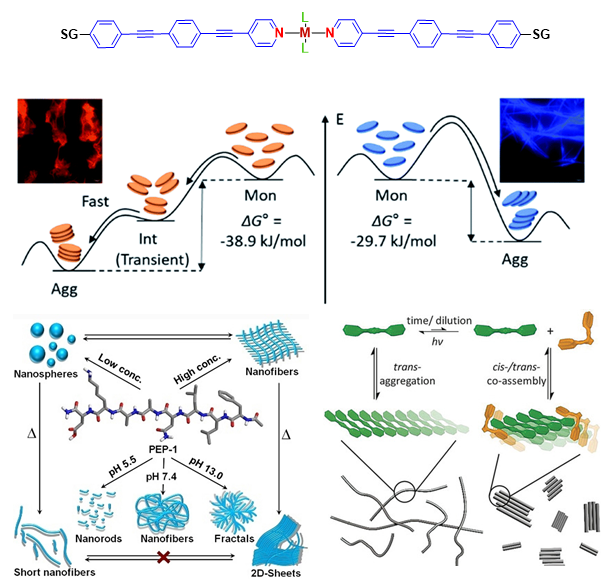ERC StG SUPRACOP

© Gustavo Fernández Summary of the context and overall objectives of the project
Understanding the molecular features governing the self-assembly of functional molecules into functional materials represents a major challenge in materials science. For example, to understand why a particular functional material (biological, optoelectronic) works efficiently, it is of utmost importance to control the molecular packing and morphology. Thus, one of the great challenges of this proposal is to program rationally designed metal complexes to create new materials with new photophysical and electronic properties.
In particular, the problem to be addressed is to create functional self-assembled materials that are soluble, processable, stimuli-responsive and programmable by understanding the molecular and supramolecular features responsible for these properties. In particular, the use of Pt(II) and Pd(II) complexes and pi-conjugated ligands as building blocks has allowed us to create new materials with exciting properties.
This understanding is important for the society to create new functional materials that can be applicable in optoelectronics and life sciences. For example, the molecular organization in devices such as solar cells, transistors, etc is key to their performance. Or in another example, programming molecules to form water soluble biomaterials is pivotal to better undertstand the operation of biological systems.
The overall objectives of this project are to program metal complexes to self-assemble in a defined fashion to create new materials with superior optical and electronic properties (semiconductivity, phosphorescence, dichroism, etc). Also, these materials are expected to be formed and disassembled reversibly and controlled by external stimuli such as light and pH. This has resulted in the discovery of novel adaptive supramolecular systems. The exploitation of coordination isomerism in supramolecular self-assembly has also represented an important method to control the aggregate morphology in self-assembly. Currently, some projects based on these findings are underway. In addition, we are currently creating advanced adaptive supramolecular systems and investigating memory effects in supramolecular polymers.
Finally, the implementation of some of our self-assembled Pt/Pd(II) complexes in optoelectronic devices is currently underway.
